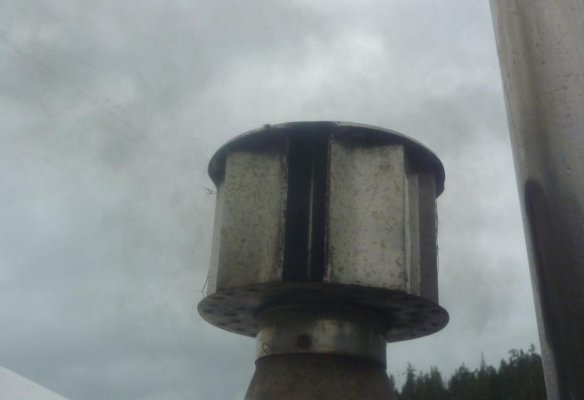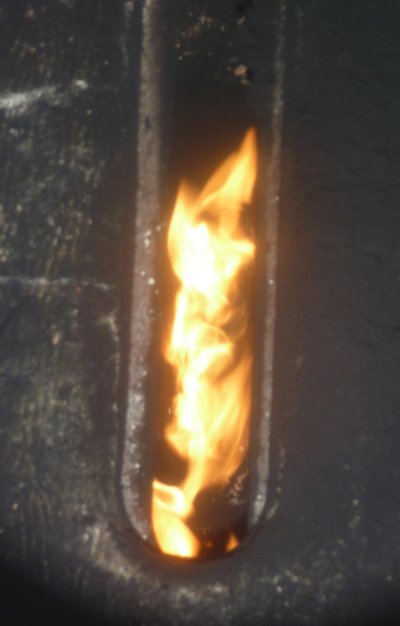FF
Guru
- Joined
- Oct 12, 2007
- Messages
- 22,552
>It stank, it was unreliable often going out for no apparent, to me, reason.<
One reason for the stove to go out is the wrong smoke head or no barometric damper.
A puff (25-35+K) of wind can suck the flame out , which is not noticed till it starts to get cold in the boat.
The required barometric damper , with an H smoke head solved this.
Once the installation is correct the units will operate for all winter with no effort.
Ours is a hydronic set up . a 7 turn coil is inside the heater , the water goes as high as possible in the PH and gravity runs it thru the (WT) bulkheads and back to the unit.The circulating water is a constant 135 F when adjusted properly (by hand) weather its -17F or +60F outside.There is about 20 ft of finned baseboard tubing to carry the heat into the fwd cabin.
>surely you remember FF froze his body parts off in NY.<
My first attempt at heat was electric , a total failure.
The next was with an Espar that I was not smart enough to run on 50% kero , and still used a start stop thermostat .
After switching to 50% kero , and using the unit at all times on half it did work acceptably.
Only problems with the Dickinson came After the hydronic was working well.
I switched from hose (with nice gentle big radius ) to copper tubing and it shut down. Using refrigeration slow Ls solved that hassle.
One reason for the stove to go out is the wrong smoke head or no barometric damper.
A puff (25-35+K) of wind can suck the flame out , which is not noticed till it starts to get cold in the boat.
The required barometric damper , with an H smoke head solved this.
Once the installation is correct the units will operate for all winter with no effort.
Ours is a hydronic set up . a 7 turn coil is inside the heater , the water goes as high as possible in the PH and gravity runs it thru the (WT) bulkheads and back to the unit.The circulating water is a constant 135 F when adjusted properly (by hand) weather its -17F or +60F outside.There is about 20 ft of finned baseboard tubing to carry the heat into the fwd cabin.
>surely you remember FF froze his body parts off in NY.<
My first attempt at heat was electric , a total failure.
The next was with an Espar that I was not smart enough to run on 50% kero , and still used a start stop thermostat .
After switching to 50% kero , and using the unit at all times on half it did work acceptably.
Only problems with the Dickinson came After the hydronic was working well.
I switched from hose (with nice gentle big radius ) to copper tubing and it shut down. Using refrigeration slow Ls solved that hassle.
Last edited:



